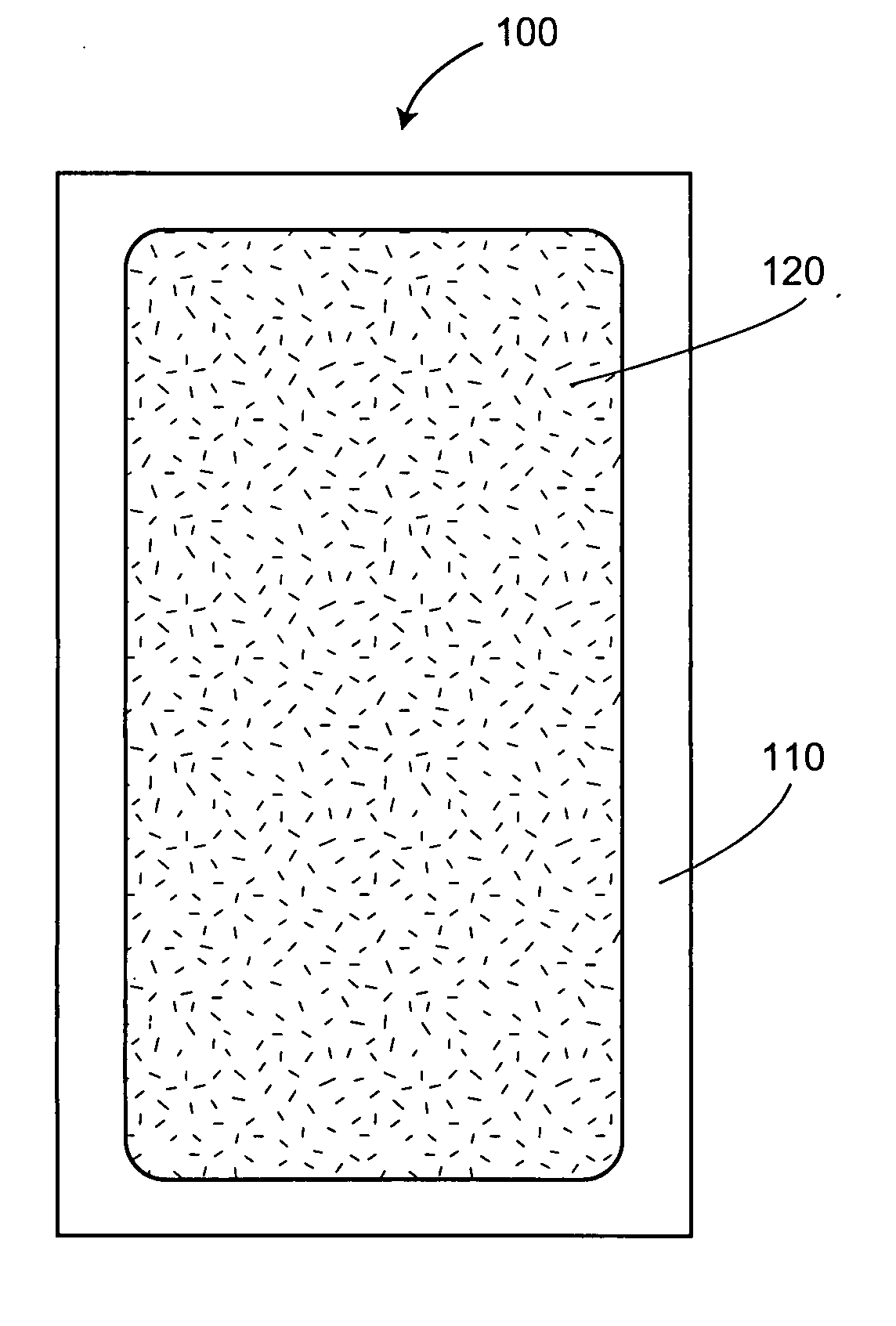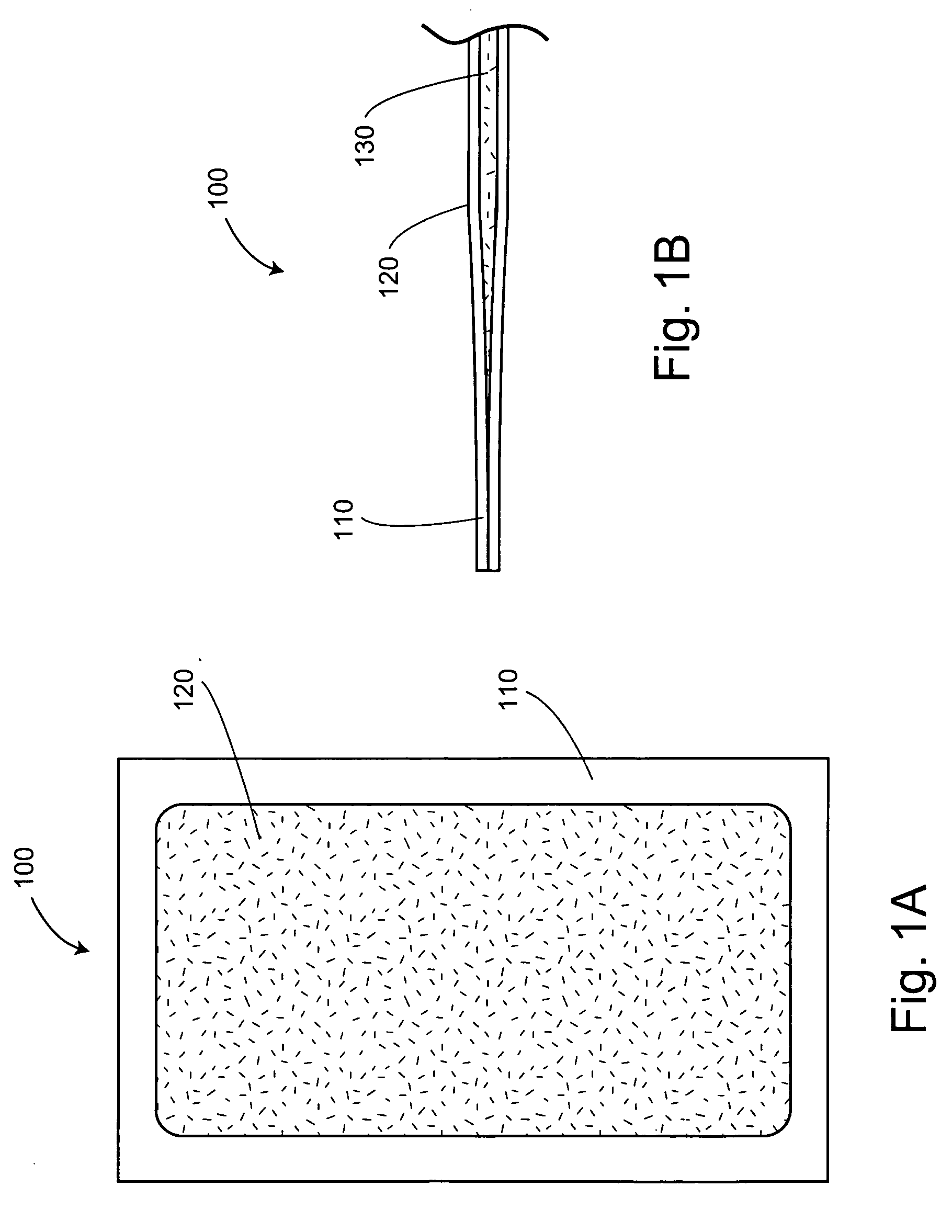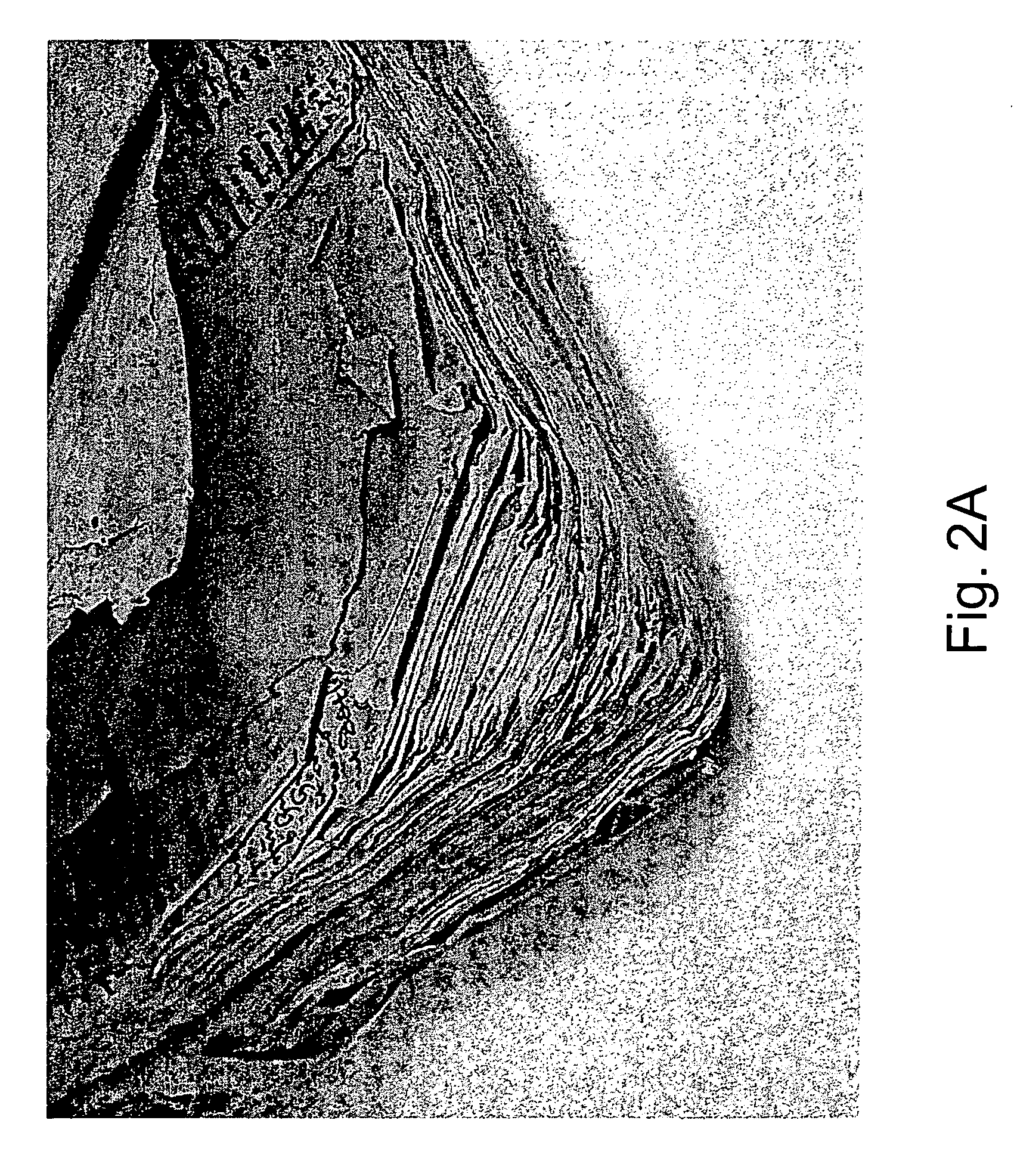Methods and devices for humidity control of materials
a technology of humidity control and materials, applied in the field of humidity/moisture control technology, can solve the problem that the device does not have sap layers, and achieve the effects of reducing labor cost and drying time, preventing mold damage, and reducing labor costs and drying tim
- Summary
- Abstract
- Description
- Claims
- Application Information
AI Technical Summary
Benefits of technology
Problems solved by technology
Method used
Image
Examples
example 1
Comparison of Newsprint and SAP Laminate Sheets in Book Drying
[0070] A comparison was made between drying a book by blotting with newsprint and drying through use of the present invention. Traditional drying with newsprint involves the interleaving of clean newsprint between pages of a book (e.g., every 10 pages, etc.). Certain embodiments of the present invention utilize interleaving of SAP laminate sheets of the invention between pages of a book (e.g., every 10 pages, etc.). Because the present invention works well on any porous material, factors such as age of the book, paper manufacture, types of ink or binding style do not typically influence drying efficiency. As can be seem from Table 2, when the SAP laminate sheets of the invention were compared against blotting with newsprint, the SAP sheets dried the book in 1.5 hours, while the newsprint required a full 2.5 days. No mold growth was observed in either sample, but in actual disaster or recovery environments, mold growth ca...
example 2
Use of SAP Laminate Sheets to Relax Brittle Papers
[0071] SAP laminate sheets of the invention were used to relax “dog-ears” of book pages. SAP laminate sheets were wetted and placed under a manuscript page to allow water vapor from the laminate sheet to moisten and relax the page. In this example, once the page had become relaxed from the humidity, silicon release paper was placed on either side of the page and the dog-ear was pressed out with a tacking iron at medium-low heat. Once the crease was relaxed, heat was again applied, with more blotter underneath the area, to drive out remaining moisture. Of course, instead of pressing out the creases with a tacking iron, additional sheets of dry SAP laminate could have been applied, optionally with pressure, to remove the applied moisture. As work progressed through the book, previously relaxed pages were subjected to subsequent pressure and heat from work on the pages above them thereby aiding in the removal of the dog-ears. The vellu...
PUM
 Login to View More
Login to View More Abstract
Description
Claims
Application Information
 Login to View More
Login to View More - R&D
- Intellectual Property
- Life Sciences
- Materials
- Tech Scout
- Unparalleled Data Quality
- Higher Quality Content
- 60% Fewer Hallucinations
Browse by: Latest US Patents, China's latest patents, Technical Efficacy Thesaurus, Application Domain, Technology Topic, Popular Technical Reports.
© 2025 PatSnap. All rights reserved.Legal|Privacy policy|Modern Slavery Act Transparency Statement|Sitemap|About US| Contact US: help@patsnap.com



